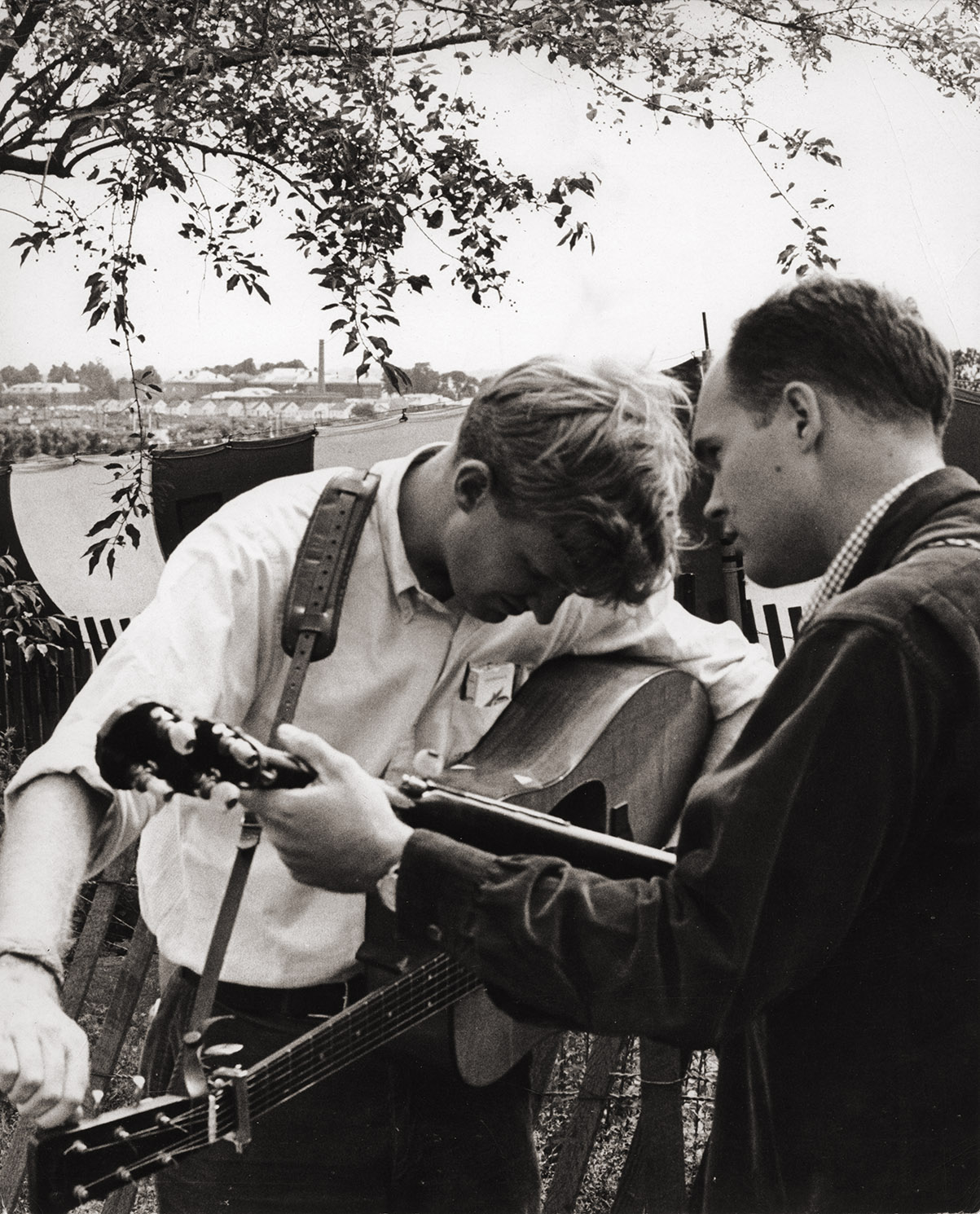Background on Bill Keith

Jim Rooney, tuning his guitar, and Bill Keith at the Newport Folk Festival, 1965
A stylistic innovator and influential performer on the five string banjo, Bill Keith is credited with transforming the instrument from a largely percussive role into a one where it carried the melody. Born December 20, 1939, Keith grew up in the Boston suburbs playing the plastic ukulele and piano, learning to read music in the process. His musical direction, however, took a sharp turn after he began listening to country and bluegrass music on radio broadcasts from the south.
Going down to a local music store, Keith purchased began taking Dixieland on a four string banjo until the summer 1957, shortly before entering Amherst College, when he heard a five string being played. Immediately, he recognized that this would be his instrument. Using the Pete Seeger instructional book, he taught himself a three-finger style, but began expanding his technique by listening intently to Earl Scruggs, Don Reno, and others and reconstructing their approach, even recording a tablature for Scruggs. Building off from his studies of Scruggs, Keith reimagined the banjo as an instrument capable of carrying the melody usually taken up by the fiddle, playing in a note-for-note rolling style that became his signature.
Meanwhile, Keith and his roommate, guitarist and singer Jim Rooney, began to perform locally in small clubs, on radio shows, and local television, moving to Boston after graduation to immerse themselves in the burgeoning folk revival scene. In December 1962, Keith was introduced to Scruggs after a concert and took the occasion to show him the tablature he had been working on. Although Scruggs did not read music, he was impressed and verified that Keith's transcriptions were mostly accurate, leading the two to collaborate on a new instruction book, Earl Scruggs and the Five String Banjo, using the Keith tablature.
Another turn in Keith's career soon followed. In 1963, the "father of bluegrass," Bill Monroe, heard Keith playing backstage at the Grand Ole Opry and invited him to become part of his Blue Grass Boys band. Although Keith remained with Monroe only eight months, his reputation as a banjo player grew rapidly. He contributed to the technical side of the music as well, devising a new tuning peg for the banjo with another Amherst alumnus, Dan Bump, that enabled players to change pitch accurately even at high speeds. He marketed the tuner, known as the Keith Tuner, through the Beacon Banjo Company, a company he created in January 1964, selling more than 30,000 units over the next several decades.
After leaving Monroe, Keith joined the Jim Kweskin Jug Band for four years and expanded his instrumental range by adding the pedal steel guitar in the late 1960s. On stage and in studio he performed with a stylistically and generationally diverse range of acts over the next two decades, from Ian and Sylvia to Judy Collins, Richie Havens, Loudon Wainwright, and the Bee Gees. He was part of a short-lived bluegrass supergroup, Muleskinner, in 1973, that included Peter Rowan (guitar and signer), David Grisman (mandolin), Richard Greene (fiddle), and former Byrds guitarist Clarence White. In all, Keith performed on nearly twenty albums, beginning with Bluegrass Livin' on the Mountain, with Jim Rooney in 1963 (Prestige Folklore). He continued to perform nearly to the time of his death by cancer on October 23, 2015.

